Main Level Floor Plans For Quintessential Farmhouse
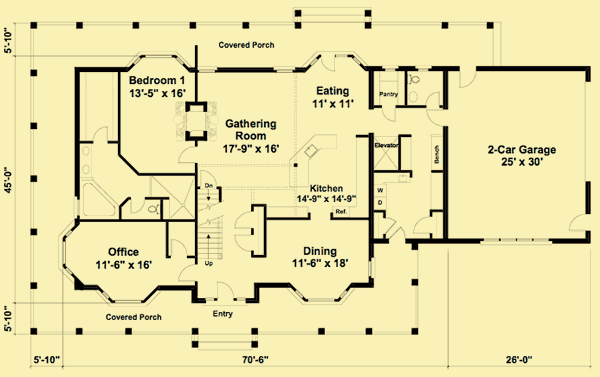
Upper Level Floor Plans For Quintessential Farmhouse
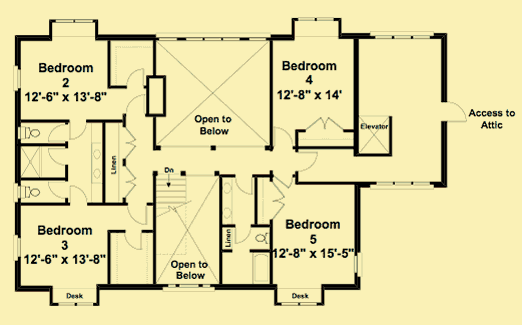
Lower Level Floor Plans For Quintessential Farmhouse
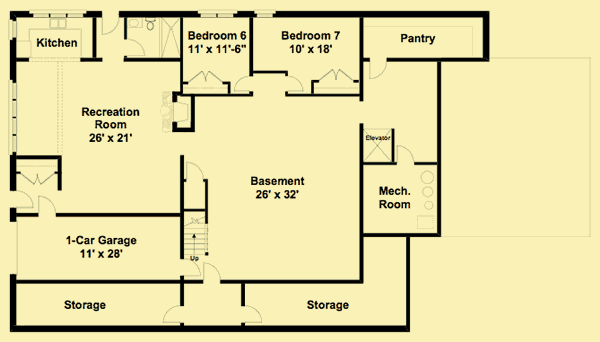
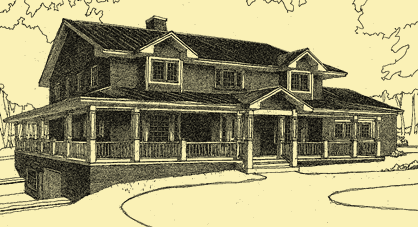
| Total Above-ground living area | 4121 |
| Main Level | 2496 |
| Upper Level | 1625 |
| Lower level living area | 2106 |
| Footprint The dimensions shown are for the house only (indicating the smallest area needed to build). They do not include the garage, porches, or decks, unless they are an integral part of the design. |
70.5 W x 45 D |
| Above-ground bedrooms | 5 |
| Above-ground bathrooms | 3.5 |
| Master suite | Main |
| Lower-level bedrooms | 2 |
| Lower-level bathrooms | 1 |
| Stories | 2 |
| Parking | garage |
| Number of stalls | 3 |
| House height
Traditionally, the overall height of a house is determined by measuring from the top of the finished floor on the main level, to the highest peak of the roof.
|
30 |
| Ceiling heights Raising or lowering the height of the ceilings on one or more floors of a house is often a simple change that can be made by your builder. However, if you want to raise the ceiling of the main floor of a two-story home, there has to be room to add steps to the existing staircase. |
|
| Main level | 9 |
| Upper level | 8 |
| Vaulted ceilings
We consider a room to be vaulted if the ceiling - whether flat, angled, or curved - is above 10 feet at its highest point. If you prefer that one or more rooms not be vaulted in your new home, this is a very simple change that your builder can make for you.
KEY TO SYMBOLS: LR = Living Room/Great Room DR = Dining Room FAM = Family Room FOY = Foyer STU = Study/Library/Den KIT = Kitchen SUN = Sunroom MBR = Master Bedroom MB = Master Bath LOF = Loft OFF = Office/Guest Room REC = Recreation/Game Room ALL = Entire Level |
FAM |




The front covered porch wraps around the entire house (excluding a portion of one side where the garage is attached), providing abundant space to sit out and enjoy the outdoor views in all four directions! The entry foyer has a two–story vaulted ceiling and two large coat closets. To the left off the foyer, is a door to a private office/bedroom that has bay windows on two walls, providing abundant natural light and views. It also has a walk–in closet. To the right off the foyer there is a formal dining room with a bay window looking out to the front, and a door opening to the kitchen for direct access. Straight ahead, after passing beneath a lowered ceiling supporting a bridge on the upper level, is the gathering room. This open space features a dramatic two–story ceiling, and picture windows at the second floor level that bring in additional light and views. A two–sided stone fireplace is shared with the master bedroom that is located on the other side.
The open kitchen features an angled island between it and both the gathering area and an eating nook. The nook has a bay with windows and a glazed door that walks out to the rear porch. An opening next to the eating area leads to a hall that accesses a walk–in pantry, a powder room, an optional elevator, and a door to the oversized two–car garage. The hall opens up to a mudroom with room for lockers and a bench, which accesses a large laundry/utility room. The laundry room has a door that opens onto the front covered porch, providing a secondary entrance.
The master suite is located on the opposite side of the house, next to the gathering room. The master bedroom is kept warm from the two–sided fireplace, and it features a large bay window looking out to and beyond the rear porch. The generous–sized master bath has a private toilet room, a tub, a separate shower, two vanity sinks, and a long walk–in closet.
Upstairs, a bridge connecting the left and right sides of the upper floor looks down to the entry foyer and the gathering rooms below, and even has outdoor views to the rear with the second–level picture windows in the gathering room. To the left is a short hallway with a four–door linen closet and doors to each of two bedrooms that share a large bath with a private toilet room for each bedroom. The bedrooms each have a walk–in closet, and a sunny dormer space that would make an ideal desk nook. To the right there is a full bath and two more bedrooms, each with a dormer nook. A large elevator lobby has space for furniture, and would make an excellent reading area with the windows that face the front and back. If an elevator is not needed, this space could be a recreation room. A door in this space accesses an unfinished attic space with a flat ceiling down the center and sloping ceilings on either side.
This plan set includes an optional unfinished basement, as well as a basement design that offers an additional one–car garage, and the flexibility to be used as either a complete in–law apartment, or as a recreation/entertainment area with guest bedrooms. As drawn, it includes two bedrooms, an open recreation or living room with a fireplace and space for dining, a kitchen, and a full bath. There is also a 21–foot long pantry(!), a lobby for the elevator, a mechanical room, and tons of storage space. Because of the slope of the original site, windows look out to the back and side, and a door on each wall leads to the exterior.
The plans for this home call for insulated concrete form (ICF) exterior walls. However, they can easily be changed to 2×6 stud walls by your builder or a design professional. Be sure to confirm this with your builder prior to purchasing the plans.
In–Law Unit
All that’s really necessary is to remove the wall between bedroom 6 and 7 (or not, if it’s an older couple who prefer two bedrooms). There’s ground level access if you build on a sloping lot, a one–car garage, and an elevator to the upper levels.

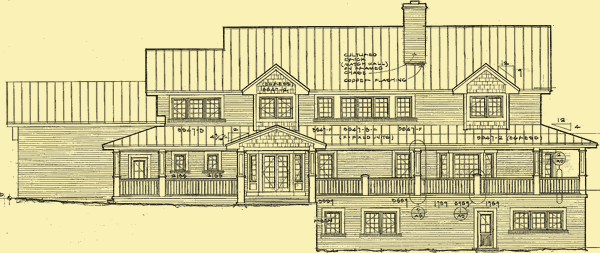
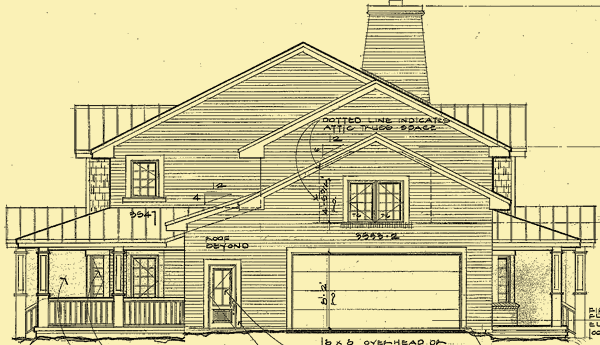

This home has many of the exterior characteristics we associate with classic farmhouses – a covered wraparound porch beneath a low–pitched roof, hipped dormers projecting from a simple roof over the main portion of the house, and an aura of understated elegance. Unlike farmhouses in the past, however, this home features a master suite on the main level, an open floor plan, and an optional elevator serving all 3 floors. If you choose to build the basement it can be easily modified into an in–law apartment.